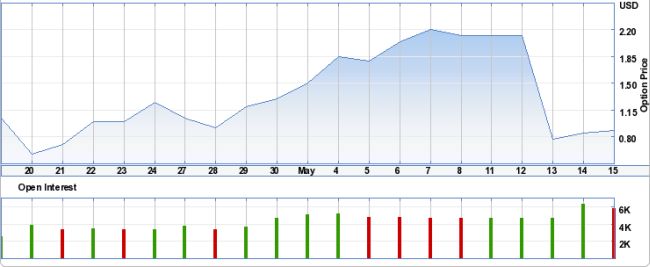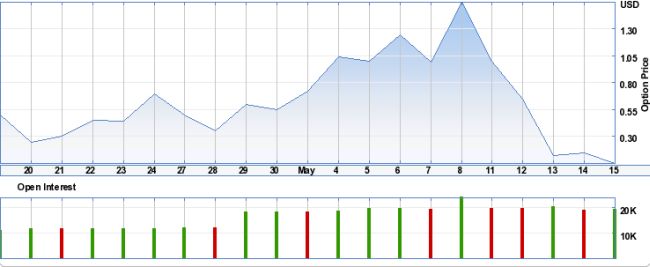After One Week of Weakness, the Stock Market Changes Character
By Dr. Duru written for One-Twenty
May 17, 2009
The S&P 500 fell for only the second week during this on-going rally from the March lows. Last week's 5% drop nearly erased all the gains from the prior week's 6% surge to the current closing top of 929. One week of weakness was enough to introduce several changes in character for this rally, including:
- The percentage of stocks trading below their 40-day moving average (T2108) dropped below 80% for the first time. Recall that I reviewed a capital preservation trading strategy for selling once this indicator goes below 70%. Given the historic nature of the current overbought conditions, I have to assume that selling when T2108 first drops below 80% works even better than waiting for a drop below 70%.
- Stochastics on the S&P 500 are touching oversold levels (see chart below).
- Put/call ratios on the S&P 500 have surged back to their highest levels over the 12 months.
- XLI (the SPDRs Select Sector Industrial ETF) options traders have turned bearish.


Put/call ratios on the S&P 500 have soared recently. The put/call ratio on the SPY was 1.86 on Thursday and back to levels last seen July, 2008, the highs for the past 12 months. The story is similar for the OEX (the Standard & Poors 100). Typically, extremes in the put/call ratio are used as a contrary indicator. During this bear market, the extremes have signaled reversals consistent with the put/call sentiment. This indicator has tended to spike ahead of sell-offs and to bottom ahead of rallies. For comparison, the put/call ratio on the QQQQ, the top 100 stocks of the NASDAQ, does not quite confirm the current S&P 500 signal. It is only in the middle of its 12-month range, and it is actually lower than it was at the start of May.
The XLI put/call ratio does confirm the bearish signal looming over the S&P 500. The put/call ratio has spiked to 1.74, toward the 12-month highs. Similar to the put/call ratio on the S&P 500, the XLI options trading has led rallies and sell-offs. I have followed the bullish trading in XLI options since the end of March. Buyers of May's calls on the XLI had to sell ahead of the correction to make any money. The XLI ended Friday just about right where it was on April expiration (April 17). The charts below show that most traders who stuck by the May 21 and May 22 calls ended on the losing end of the trade this time around.


fs Overall, I remain bearish on the market, but I am now wary of a rebound that eventually tests the 200DMA on the S&P 500. In particular, I think there will be a lot of enthusiastic buzz amongst bulls over claims from an economist on the Business Cycle Dating Committee of the National Bureau of Economic Analysis that the recession has already ended. I continue to expect a substantial correction in the Fall (or thereabouts!)
Be careful out there!
Full disclosure: long SDS. For other disclaimers click here.